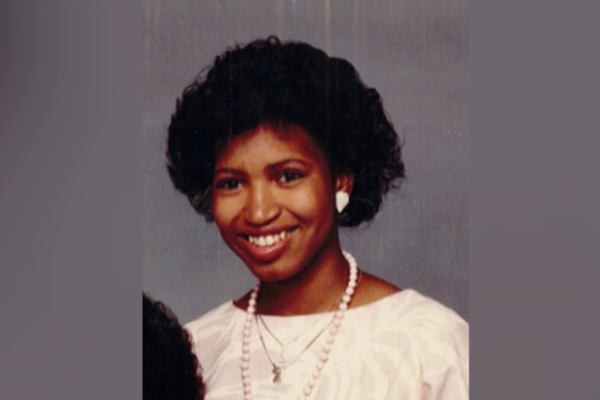
This is the third and final installment of a series.
"We cannot exist as an organization without the contribution of female doctors, who are an asset to this university."

This statement was expressed by Masahiko Usui, former chairman of the board of regents of the Tokyo Medical University, in the university's in-house pamphlet published in 2016.
However, the university had manipulated and lowered the entrance examination scores of female examinees for at least 10 years before the issuance of the pamphlet. It is said that Usui is the one who took the lead in the series of manipulations.
An internal investigation report released by the university in early August explained the reason for discrimination against women in the entrance exam, saying, "As women grow older, their activities as a doctor decline." At a press conference, the investigative committee explained the meaning of this statement, saying, "Women become unable to work long hours because they give birth to and raise children."

However, according to a government survey, the number of female doctors in 2016 was about 67,500, accounting for more than 20 percent of total doctors nationwide. Ironically, as Usui stated, it is now impossible to maintain Japan's medical services without the power of female doctors.
Support schemes
This July, Mayu Watanabe, 36, a female doctor who works in the department of nephrology, rheumatology, endocrinology and metabolism at Okayama University Hospital, returned to work full-time.
Watanabe gave birth to her son six years ago. Six months later, she began working once or twice a week at a general hospital, but sometimes had to take an unscheduled day off when her child became sick. "Balancing work with raising a child was harder than I imagined," she said.
So she decided to apply for Okayama University Hospital's so-called career support scheme. The biggest feature of the program is that it enables applicants to work as a "supernumerary" doctor.
Normally, a required number of staff is allocated for each department, and the work is divided up among these doctors and other staff, including day and night duties and emergency calls. When included in the regular staff, exemptions from day and night duties and emergency calls or unscheduled absences place a burden on someone else.
In response to female doctors who wanted to work but did not wish to place an extra burden on their workplace, Okayama University launched a program in 2008 to employ doctors and other medical staff as supplementary staff for those who would have difficulty working regular hours due to raising children or providing family care. These staff would not be included in the allotted number for a department.
These doctors are able to choose working hours that fit their lifestyle, but they are paid an hourly wage with no bonuses. Currently, the hospital employs enough supplementary doctors and medical staff to do the equivalent work of 22 personnel, assuming one employee works 31 hours per week. The program costs more in term of personnel expenses, but it is a boon to shorthanded departments.
In Watanabe's case, she worked only one day for 3-6 hours per week until her son turned 5. She then gradually increased her workload at wards. Now she serves as an assistant professor at the university, and handles duties such as diagnosis and night and holiday shifts. "Thanks to this system, I was able to ease my way back into working as my child grew up," she said.
Thus far, 129 people have used the system, including one man. "Female doctors can continue working if there is a way for them to work at a reduced pace in the period after having a baby," said Hitomi Kataoka, 45, a physician who serves as chief of Okayama University's career center for medical staff. "Some doctors in our support scheme have the chance to visit areas suffering from a shortage of doctors, so the program also contributes to regional health care."
Efforts gradually spreading
Physician Aya Ando works at the Emergency Medical Center of Fujita Health University Hospital in Aichi Prefecture on a shorter working schedule of 30 hours per week while raising two children.
The 30-year-old has the goal of becoming a certified medical specialist in emergency treatment. To do so, she needs to meet certain requirements such as having a minimum of three years of experience and diagnosing a certain number of cases.
In fiscal 2013, Fujita Health University Hospital introduced a system that treats doctors working reduced hours the same as full-time employees, helping doctors with a shorter working schedule who want to become specialists. Under the guidance of a mentor, Ando is now accumulating knowledge by studying documents between examining patients.
Yukio Yuzawa, director of the hospital, said: "Securing skilled female doctors is a crucial issue for hospitals. We have had a high level of awareness on this issue, and have worked on preparing a favorable working environment for female doctors."
In other examples, Jichi Medical University conducts training programs to assist female doctors who have temporarily left work to return to their jobs. Tokyo Women's Medical University offers childcare services at the hospital, which are also available at night and on holidays.
"It is important to face the reality that it is women who shoulder the responsibility for housework and childcare and create a working environment in which they can get by without quitting their jobs," said Yoshiko Maeda, head of the Japan Medical Women's Association.
"However, a system that simply shifts the burden to their coworkers will fail. Dispelling the feelings of unfairness among male and unmarried doctors and increasing the number of women who continue working will be the real 'assets' for the medical community."
Read more from The Japan News at https://japannews.yomiuri.co.jp/







